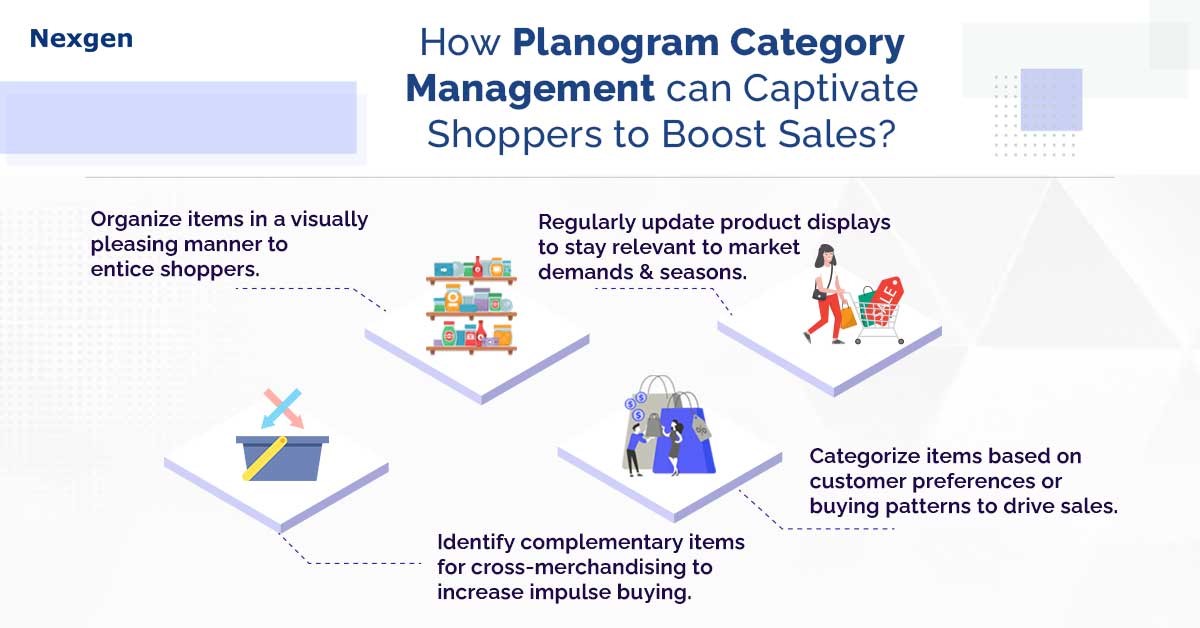Imagine when a customer, with a list in hand for culinary adventures, navigates the aisles in search of ingredients for a hearty spaghetti dinner. As they traverse the store, the shelf planning software, such as planograms, subtly guides their journey. The pasta, strategically placed beside the rich tomato sauces, beckons like a culinary muse, encouraging the shopper to explore complementary items. Fresh basil, aromatic garlic, and a display of olive oils are effectively positioned, transforming simple shopping into an enticing experience. This is not accidental; it is the result of planogram category management, leading the shopper from aisle to aisle, enhancing their experience, and boosting sales by presenting a curated narrative of culinary possibilities.
Understanding Planogram Category Management
A planogram is a visual representation of a store's layout that details the placement of products on shelves and displays. Planogram category management takes this a step further by analyzing customer behavior, market trends, and sales data to optimize the arrangement of products within specific categories. The goal is to create an appealing and logical product layout that not only attracts shoppers but also maximizes sales opportunities.

- Enhanced visual appeal: Planogram category management involves meticulous design to ensure each aisle is visually appealing. Products are organized in a way that is aesthetically pleasing, making it more likely for shoppers to explore and discover new items. Imagine a supermarket during the holiday season, where the planogram dictates the placement of festive products. From winter-themed displays near the entrance to Christmas decorations strategically positioned in aisles, the seasonal arrangement not only enhances the visual appeal but also creates a joyful atmosphere that resonates with shoppers.
- Improved customer navigation: By strategically placing products based on customer preferences and buying patterns, retailers can create a more intuitive shopping experience. Easy navigation through well-organized categories reduces customer frustration and increases the likelihood of additional purchases. In a sports shoe store, you can strategically place running shoes, basketball shoes, and other athletic footwear in a designated “fit zone” with the help of planograms. Each section is clearly labeled and organized by shoe type and activity, making it easy for customers to navigate based on their preferences. This reduces the time shoppers spend searching for the right footwear, enhancing the overall shopping experience.
- Seasonal and trend integration: Planogram category management allows retailers to adapt quickly to changing seasons and trends. In a grocery store, the planogram could highlight a "fresh and local" section that changes with the seasons. During the summer, the focus might be on locally sourced fruits and vegetables, while in the winter, it shifts to hearty root vegetables and seasonal produce. By efficiently rotating and updating product displays, stores can stay relevant to market demands and provide customers with a fresh and engaging shopping experience.
- Cross-selling opportunities: Smart category management enables retailers to identify complementary products and strategically position them together. In a bookstore, you can create bundles of books from the same genre or by the same author. By strategically placing these bundles, the store encourages customers to explore related titles, increasing the likelihood of multiple book purchases and facilitates cross-selling opportunities.
Boosting Sales Through Planogram Category Management
- Data-driven decision-making: Utilizing sales data, customer insights, and market trends, retailers can make informed decisions about product placement. This data-driven approach ensures that the planogram is continually optimized for maximum sales impact.
- Promotional effectiveness: Planogram category management is a powerful tool for implementing promotions effectively. By strategically placing promotional items, retailers can draw attention to special offers, resulting in increased sales and customer satisfaction.
- Inventory management: Efficient category management helps retailers manage inventory more effectively. By aligning stock levels with customer demand, stores can minimize stockouts and overstock situations, ensuring that products are always available when customers are ready to purchase.
Overview of Nexgen POG
Nexgen POG is a robust and user-friendly cloud-based visual merchandising tool. It is designed for quick and efficient planogramming with minimal effort. Planogram in retail can be designed by easily dragging and dropping the products. The multi-device compatibility feature of POG allows you to obtain, share and edit planogram on any device, including your phone. It helps in designing store-specific planograms for increased product visibility and sales.
Get Your Free Trial Now!